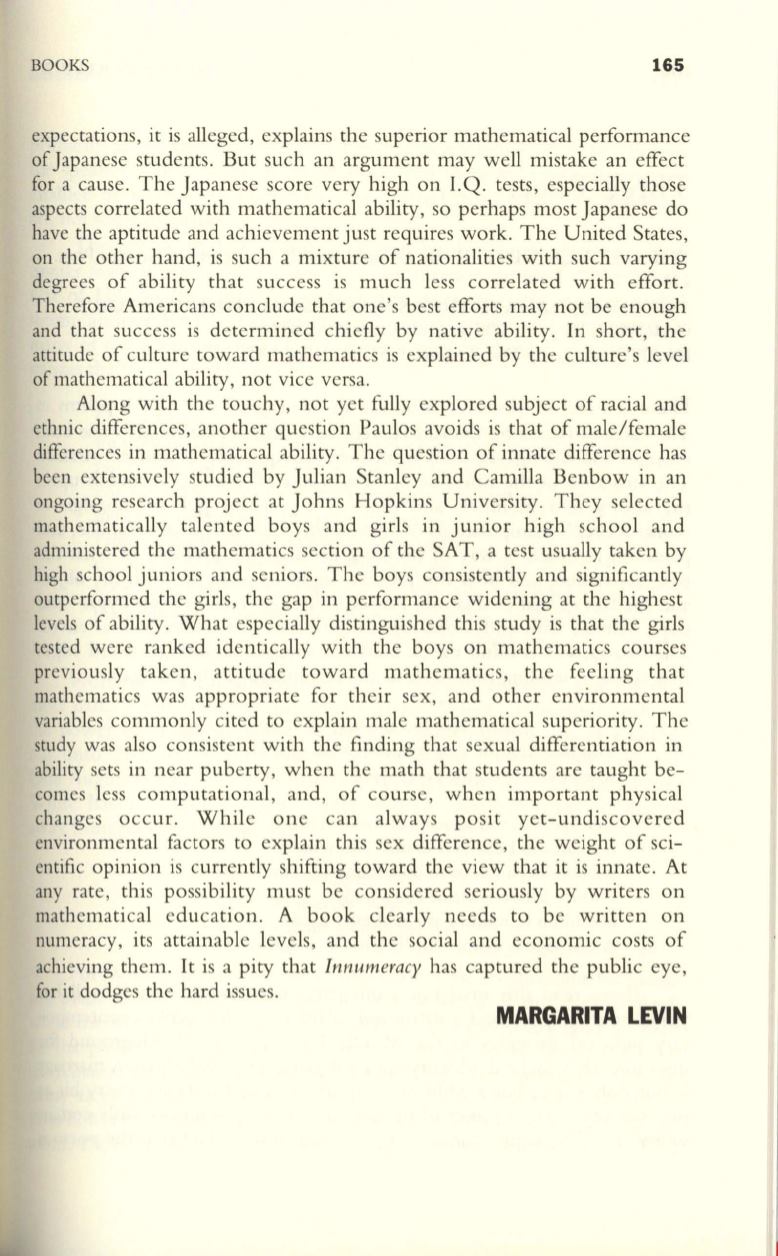
BOOKS
165
expectations, it is alleged, explains the superior mathematical performance
of Japanese students. But such an argument may well mistake an effect
for a cause. The Japanese score very high on
I.Q.
tests, especially those
aspects correlated with mathematical ability, so perhaps most Japanese do
have the aptitude and achievement just requires work. The United States,
on the other hand, is such a mixture of nationalities with such varying
degrees of ability that success is much less correlated with effort.
Therefore Americans conclude that one's best efforts may not be enough
and that success is determined chiefly by native ability.
In
short, the
attitude of culture toward mathematics is explained by the culture's level
of mathematical ability, not vice versa.
Along with the touchy, not yet fully explored subject of racial and
ethnic differences, another question Paulos avoids is that of male/female
differences in mathematical ability. The question of innate difference has
been extensively studied by Julian Stanley and Camilla Benbow in an
ongoing research project at Johns Hopkins University. They selected
mathematically talented boys and girls in junior high school and
administered the mathematics section of the SAT, a test usually taken by
high school juniors and seniors. The boys consistently and significantly
outperformed the girls, the gap in performance widening at the highest
levels of ability. What especially distinguished this study is that the girls
tested were ranked identically with the boys on mathematics courses
previously taken, attitude toward mathematics, the feeling that
mathematics was appropriate for their sex, and other environmental
variables commonly cited to explain male mathematical superiority. The
study was also consistent with the finding that sexual differentiation in
ability sets in near puberty, when the math that students are taught be–
comes less computational, and, of course, when important physical
changes occur. While one can always posit yet-undiscovered
environmental factors to explain this sex difference, the weight of sci–
entific opinion is currently shifting toward the view that it is innate. At
any rate, this possibility must be considered seriously by writers on
mathematical education. A book clearly needs to be written on
numeracy, its attainable levels, and the social and economic costs of
achieving them.
It
is a pity that
Innumeracy
has captured the public eye,
for it dodges the hard issues.
MARGARITA LEVIN


